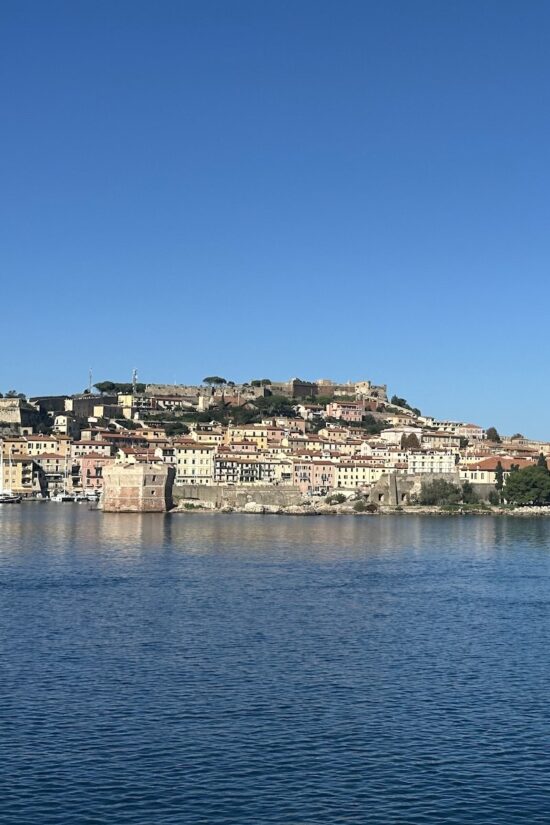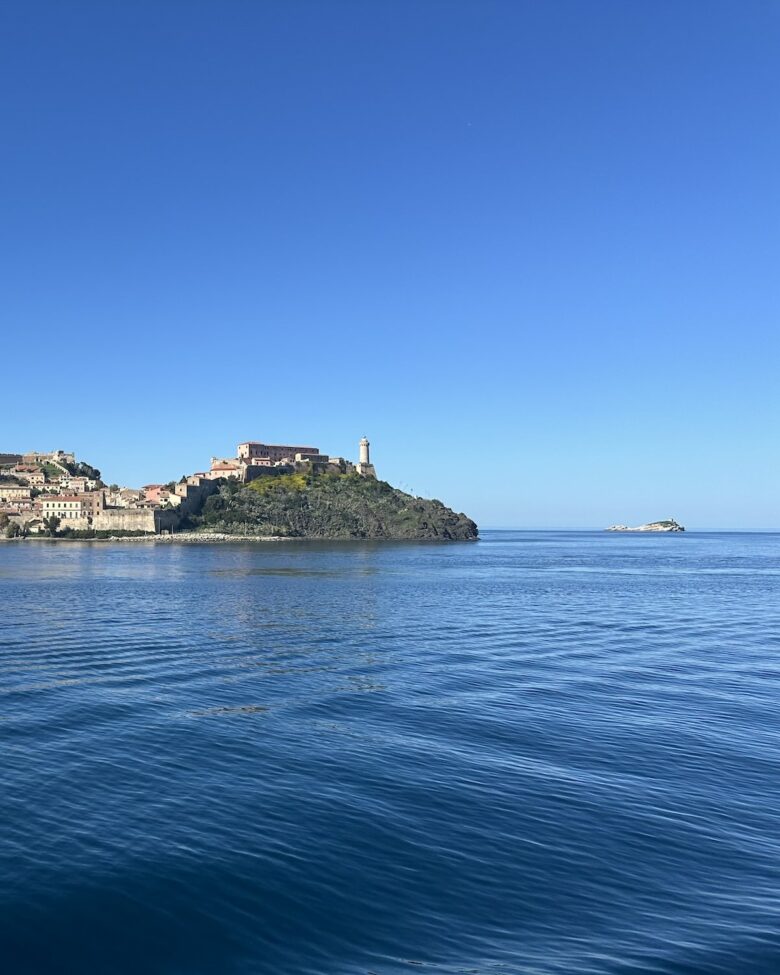Discovering the island
Elba Island
The island offers a diverse array of landscapes: romantic fishing villages, hilltop towns, ancient castles, green valleys, charming bays, and sandy or pebbly beaches—creating postcard-perfect views.
Exploring Elba means immersing yourself in nature: trekking routes and trails within the National Park wind through spectacular scenery, while the crystal-clear sea invites exploration by canoe or sailboat. In just a few kilometers, you can go from steep cliffs overlooking the sea to the granite summit of Mount Capanne, which at 1,019 meters offers a 360° view of Elba and the surrounding islands.


An island rich in history
Elba boasts a rich and fascinating history. Inhabited since prehistoric times, it became famous in antiquity for its iron mines. Known as “Ilva” by the Ligurians and “Aethalia” by the Greeks, Elba has seen the passage of many civilizations: from the Etruscans and Romans, who ruled for centuries, to the Pisans, Appiani, and Medici during the Middle Ages.
Portoferraio, once called Cosmopoli in honor of Cosimo de’ Medici, still preserves the imposing Medicean fortifications. The Spanish also left their mark with the construction of the fortress of San Giacomo and Forte Focardo in Porto Azzurro.
Napoleon Bonaparte further enriched the island’s history during his brief reign (1814–1815). His legacy includes the Palazzina dei Mulini, the Villa of San Martino, and sites like the Madonna del Monte in Marciana Alta, all of which preserve memories of his presence.
The island’s countless historical and cultural landmarks, combined with its extraordinary natural beauty, make Elba a truly magical and unique destination for your holiday.
Portoferraio
Portoferraio is a town full of history and beauty. With ancient origins, it was known in mythology as Porto Argo and later as Fabricia due to the ironworking activities during the Etruscan-Roman era.
Centuries after its founding, Portoferraio retains its Renaissance charm. The imposing walls built in the 16th century by Cosimo I de’ Medici, who renamed the city Cosmopoli, are a masterpiece of engineering and architecture. Those arriving by ferry are immediately struck by the scenic view of the harbor, dominated by historic fortresses.
At the entrance to the port stands the Torre del Martello, part of the Linguella Fortress, now home to an archaeological museum with Etruscan and Roman artifacts.
Above the historic center rises Forte Stella, built in 1548, which houses one of Europe’s oldest lighthouses, erected in 1788. From here, you can enjoy breathtaking views over the harbor and the Villa dei Mulini, Napoleon Bonaparte’s winter residence during his exile on Elba.
Forte Falcone, the highest fortress in Portoferraio, is the largest Medicean stronghold on the island. Its powerful walls withstood Saracen attacks, unlike other Elban fortresses often devastated by pirate raids.
Visiting Portoferraio’s historic center is like stepping back in time. Narrow stepped alleys, scenic squares, flower-filled balconies, and hidden corners reveal the soul of the island. Among the monuments are ancient churches and sacred places that tell the story of old Cosmopoli.
Facing the harbor, on the Grotte promontory, lies the Monumental Complex of the Grotte. With sea-view terraces, elegant mosaics, and thermal baths, this prestigious site is believed to have links to the imperial household of Augustus.
Not far away, in the Magazzini area, stands the small church of Santo Stefano alle Trane. This captivating Romanesque-Pisan church, with its unique architectural style, is one of the most significant religious buildings on the island and is well worth a visit.

